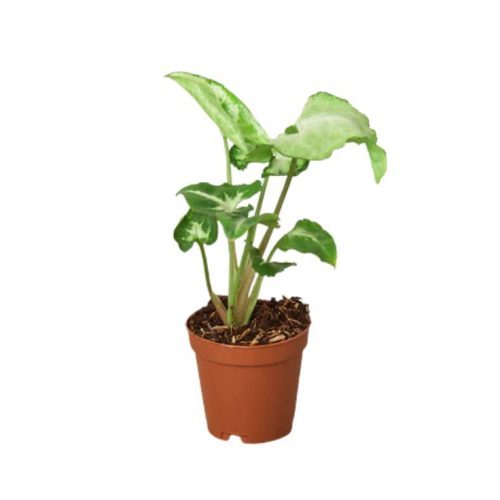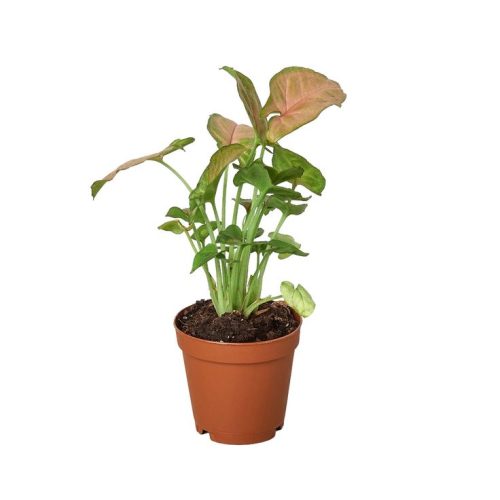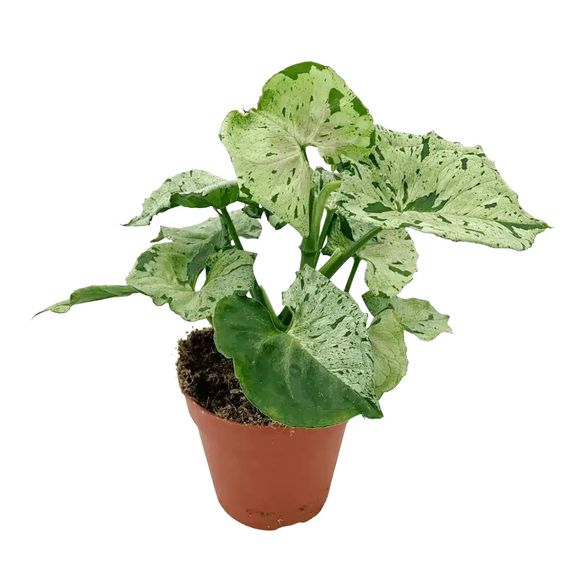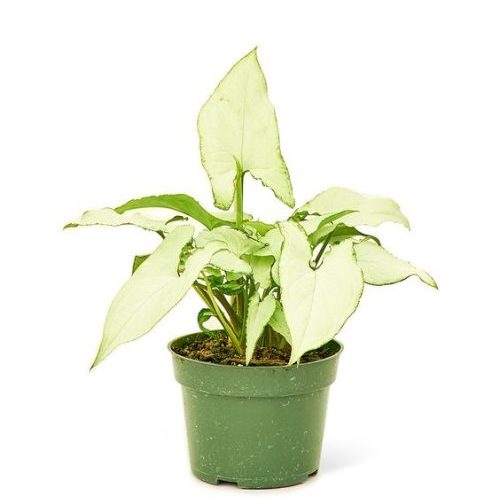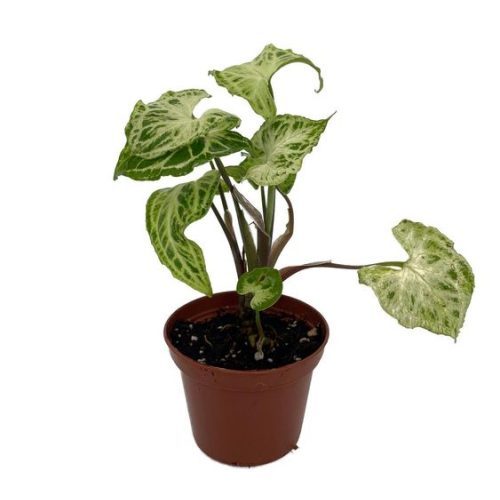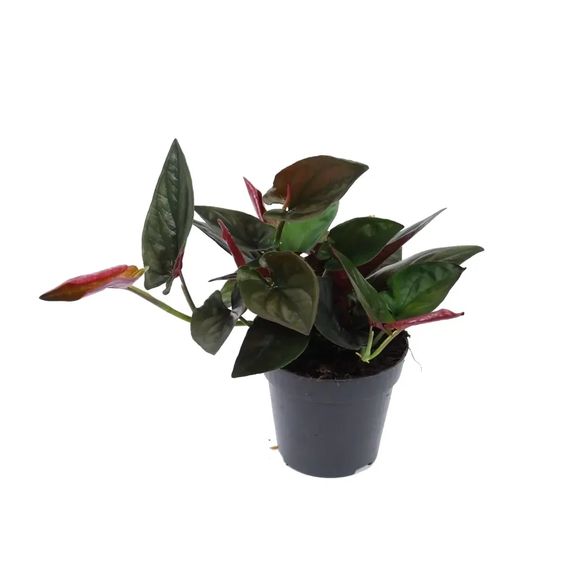Àkụ ájá na-acha ọbara ọbara
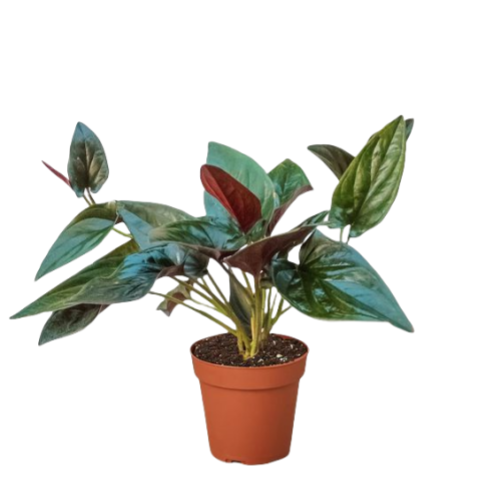
- Botanical Name: Syngonium erythphullum
- Family Name: Araceae
- Ị ga: 1-2 sentimita
- Okpomoku: 15 Celsius C-27 ° C
- Other: Climbing vine, likes shade and moisture
Nlebazi anya
Nkọwa nke ngwaahịa
Ọkụ na-acha uhie uhie
Ebe a na-edebe ihe
Osisi a na-eme ka ike nwere ike ime nke ọma n'ọtụtụ ụlọ ọrụ ma ọ bụ ụlọ, ọ bụrụhaala na ọnọdụ dị mma. Ọ na-ahọrọ ìhè na-enwu gbaa, na-eme ya nhọrọ dị mma maka oghere ndị na-anatakwa nkata ma ọ bụ okporo osisi, na-ekwe ka ọ dị ịrịba ama a na-ahụ maka ihe ngosi dị egwu.
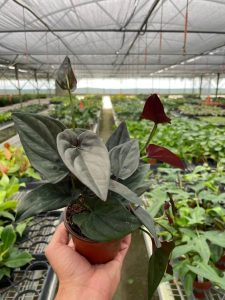
Àkụ ájá na-acha ọbara ọbara
Ịkpachara anya na nlekọta
Ọ dị mkpa iburu n'obi, dị ka ọtụtụ ndị òtù ezinụlọ Araceae, Sybonium Eryrthurthrophyllum bụ ihe na-egbu egbu ma ọ bụrụ na ọ ga-eme. Osisi ahụ nwere calcium oxtate oxtate ndị nwere ike ịkpasu iwe na ọnụ, afọ, na anụ ahụ, ya mere, ọ ga-adịrị ya ụlọ na ụmụaka. Ọzọkwa, ọ na-ahọrọ ala dị ọcha na gburugburu iru mmiri dị elu, yabụ, ọ nwere ike ịchọ ọzọ iru mmiri n'oge ọkọchị
Origindị ebe obibi
Ogige na-acha uhie uhie, nke sayensị dị ka syngonium erybophloplum, bụ ebe okpomọkụ nke etiti na Central na South America, karịsịa na-eto mmiri nke Colombia na Panama. Ọ bụ nke ezinụlọ Araceae, n'akụkụ osisi ndị ọzọ ama ama dịka Zantadeschi (Calra Lily), Caladium (Calladium nku), na Monsta (Switzessa (Switzessa (Switzessa (Switzerland. A na-ama ezinụlọ a maka ụdị ahịhịa dị iche iche na agba ndị dịgasị iche iche.
This plant’s ability to climb and trail makes it particularly suited for a variety of decorative applications. In indoor settings, it can be trained to climb a moss pole or allowed to gracefully drape from hanging baskets, creating a stunning visual effect. Its flexibility as a climber means it can be shaped and directed to fit almost any design scheme, whether as a standalone feature or as part of a larger green arrangement.
N'èzí, enwere ike ịgba bọọlụ na-acha ọbara ọbara na-agba ọsọ ịrị elu, fences, ma ọ bụ ọbụna osisi buru ibu, na-eweta ngosipụta dị egwu, na-eweta ngosipụta dị egwu. Na mpaghara ebe okpomọkụ na nke subtropical, ebe ihu igwe na-eme ka uto ya, ọ ga-eme ka ihe dị ka ala kpuchie ya ma ọ bụ na-arị elu, na-agbakwunye oyi akwa nke ahịhịa ndụ ruo n'ákwù.
Nwa akwụkwọ na-adọrọ adọrọ
Akwụkwọ nke Àkụ ájá na-acha ọbara ọbara are its most notable feature, which can change shape as the plant matures, starting from a heart shape to an arrow shape with a long point. The front of the leaves is usually a deep green, while the reverse side displays a rich reddish-brown, which is why it is called “Red Arrow.” This unique color combination and leaf shape make it very popular among plant enthusiasts.
Ebe ewu ewu n'etiti ndị na-anụ ọkụ n'obi
N'ihi ọdịdị mpempe akwụkwọ ya pụrụ iche na agba, akụ na-acha ọbara ọbara na-eme ka ọ dị mma nke ọma. Mgbanwe dị na mpempe akwụkwọ na ụdị na-eme ka ọ bụrụ nhọrọ kachasị mma maka nnakọta osisi ọ bụla na enwere ike igosi ya na ala ebe okpomọkụ dị ka osisi n'èzí. A na-egosipụtakarị ya na nkata, igbe iko, ma ọ bụ zụọ trallọn ma ọ bụ mkpanaka.
Spormont mara mma
The Red Arrow Syngonium is prized for its ornamental value, offering a lush, tropical accent to indoor spaces. It can be cultivated as part of an indoor plant collection, where it can be admired for its striking foliage。When placed outdoors in tropical landscapes, it contributes a vibrant, exotic element to the garden design. This plant’s air-purifying qualities are an added bonus, as it helps to remove pollutants from indoor air, enhancing the environment’s quality。
Ebe a na-edebe ihe
Osisi a na-eme ka ike nwere ike ime nke ọma n'ọtụtụ ụlọ ọrụ ma ọ bụ ụlọ, ọ bụrụhaala na ọnọdụ dị mma. Ọ na-ahọrọ ìhè na-enwu gbaa, na-eme ya nhọrọ dị mma maka oghere ndị na-anatakwa nkata ma ọ bụ okporo osisi, na-ekwe ka ọ dị ịrịba ama a na-ahụ maka ihe ngosi dị egwu.
Ịkpachara anya na nlekọta
Ọ dị mkpa iburu n'obi, dị ka ọtụtụ ndị òtù ezinụlọ Araceae, Sybonium Eryrthurthrophyllum bụ ihe na-egbu egbu ma ọ bụrụ na ọ ga-eme. Osisi ahụ nwere calcium oxtate oxtate ndị nwere ike ịkpasu iwe na ọnụ, afọ, na anụ ahụ, ya mere, ọ ga-adịrị ya ụlọ na ụmụaka. Ọzọkwa, ọ na-ahọrọ ala dị ọcha na gburugburu iru mmiri dị elu, yabụ, ọ nwere ike ịchọ ọzọ iru mmiri n'oge ọkọchị.





